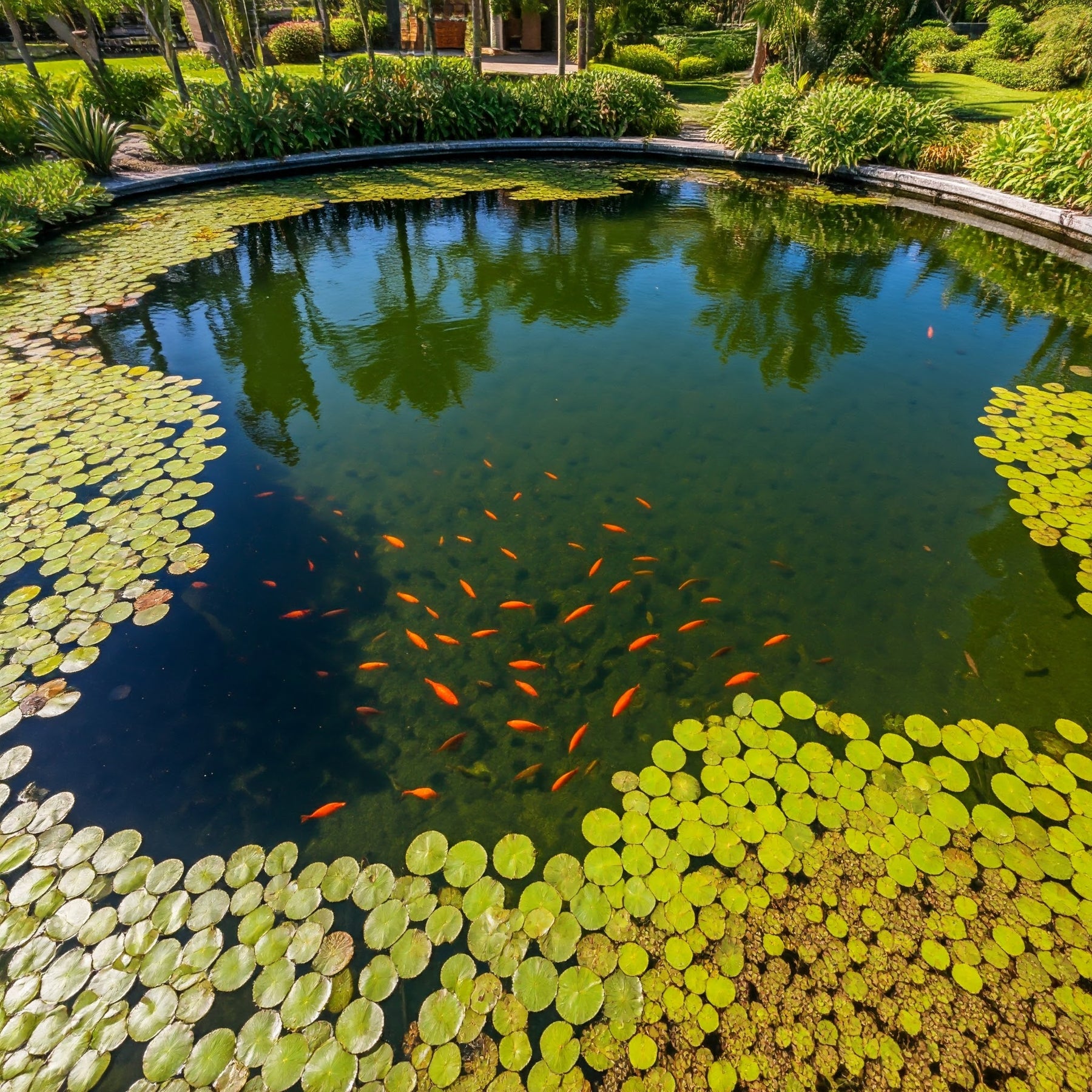
Clear Water, Happy Pond: A Guide to Algae Control
Chemical Treatments: A Quick Fix
When faced with a severe algae outbreak, chemical treatments can offer a rapid solution. However, it's essential to choose the right product based on the type of algae you're dealing with.
- Planktonic Algae: For fine, green algae, liquid algaecides like Algae D-Solv are a great option.
- Filamentous Algae: Granular products like AlgaeOff are more effective against stringy algae.
Remember to follow the product instructions carefully and consider the safety of your fish and other aquatic life.
Natural and Proactive Approaches
While chemicals can be helpful, a more sustainable approach involves preventing algae growth in the first place. Here are some natural methods:
- UV Clarifiers: These devices use ultraviolet light to kill algae cells, preventing them from multiplying and causing discolored water.
- Copper Ionizers: Copper ions released into the water can deter algae growth, especially stringy algae.
- Barley: Barley straw, extract, or pellets can help maintain a clear pond naturally.
- Beneficial Bacteria: These microorganisms consume excess nutrients, reducing the likelihood of algae blooms.
- Regular Maintenance: Remove debris, limit overfeeding, and ensure proper water circulation to create an environment less conducive to algae growth.
- Aquatic Plants: Shade your pond with plants like water lilies to reduce sunlight penetration, which algae needs to thrive.
Additional Tips
- Fish Population: Avoid overstocking your pond to prevent excessive waste that can fuel algae growth.
- Water Quality: Monitor water parameters like pH, ammonia, and nitrite levels to maintain a healthy environment.
- Aeration: Adequate aeration helps circulate oxygen and prevent stagnant areas where algae can flourish.
By combining chemical treatments with natural prevention methods, you can effectively control algae growth and enjoy a beautiful, healthy pond. Remember, consistent maintenance and proactive measures are key to long-term success. With a little effort, you can transform your pond into a vibrant oasis that will bring joy for years to come.



Leave a comment